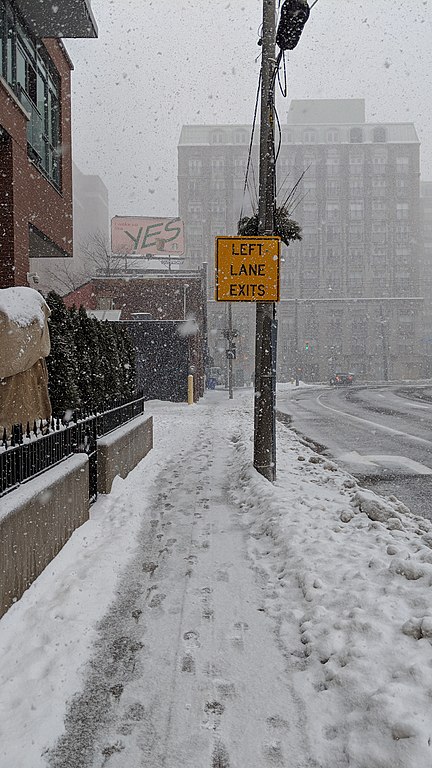
Thammasat University students are cordially invited to participate in a free Zoom event on Tracing the Anthropocene in Southeast Asian Film and Artists’ Moving Image.
The seminar is organized by the Munk School of Global Affairs and Public Policy at the University of Toronto, Canada, an interdisciplinary academic center with research and educational programs committed to the field of globalization.
The TU Library collection includes many books on different aspects of globalization.
Panelists will include Professor May Adadol Ingawanij who teaches cinematic arts at the University of Westminster, London, the United Kingdom (UK); Dr. Graiwoot Chulphongsathorn, lecturer in the Department of Motion Pictures and Still Photography, the Faculty of Communication Arts, Chulalongkorn University; Dr. Philippa Lovatt, lecturer in Film Studies, University of St. Andrews, Scotland, UK; and Assistant Professor Kiu-wai Chu, who teaches environmental humanities and Chinese studies at Nanyang Technological University, Singapore.
The moderators will be Assistant Professor Elizabeth Wijaya of the Visual Studies and Cinema Studies Institute and the Centre for Southeast Asian Studies at the Asian Institute, Munk School, University of Toronto as well as Assistant Professor Palita Chunsaengchan who teaches Asian and Middle Eastern studies at the University of Minnesota, the United States of America.
The TU Library collection includes several copies of a cotranslation by Assistant Professor Palita of the Discourse on Political Economy by the Swiss-born philosopher Jean-Jacques Rousseau.
The event will be held on Thursday, 10 March 2022 at 9pm Bangkok time.
Students may register to receive a Zoom link at this link.

As the webpage announcing the event explains,
The series, Theory/Praxis/Politics aims to advocate for and bring together perspectives of academics, filmmakers, programmers, civil servants, and other stakeholders with an interest in the question of filmmaking, practices of art and moving images of Asia and its diasporas.
For this webinar, we are pleased to present co-editors and contributors of the recently published dossier in the journal, Screen, whose articles appear in the special issue entitled, “Tracing the Anthropocene in Southeast Asian Film and Artists’ Moving Image.”
An article published last year by Dr. Graiwoot and Dr. Philippa Lovatt explains the term anthropocene:
The term ‘Anthropocene’, first proposed by the atmospheric chemist Paul J. Crutzen and biologist Eugene Stoermer, refers to a new geological epoch in which humans are perceived to be the singular driving force of the Earth’s system. Despite being popularized as a critical framework in the sciences in the early 2000s, and subsequently embraced by the social sciences and the arts and humanities, the term has only relatively recently been adopted in film studies, with the publication of influential texts by Barbara Creed and Jennifer Fay, as well as various other monographs, academic dossiers, journal articles and screening programmes. That said, one could argue that the relationship between film studies and the Anthropocene is not really new, as the field of ecocinema studies and studies of animals in visual media have tackled similar questions and concerns.3 In a way, the intersection of film studies and Anthropocene scholarship can be seen as a continuation of the same journey.
What has changed, however, is both the scale and the focus. The idea of the Anthropocene brings to film studies (or, to be more precise, ecocinema studies) a specific emphasis on the planet’s spatiality and temporality. If globalization as a concept redefined film studies scholarship in the 1990s, resulting in the popularity of world, national and transnational frameworks, the Anthropocene presents a strong argument for today’s film scholars to urgently rethink the relationship between cinema, nation and the Earth in the face of environmental crisis. Forcing us to perceive time on a geological scale, the Anthropocene challenges us to correlate the histories of humans, nonhumans, cinema and the Earth. If we accept that the new geological epoch could be said to have begun in the 18th century, we might ask whether film studies itself can be seen as the study of the moving-image culture of this new epoch. This dossier responds to the urgent need to centre Southeast Asian film and artists’ moving image within these debates…
Graiwoot Chulphongsathorn’s essay ‘Apichatpong Weerasethakul’s planetary cinema’ considers how Apichatpong’s short films and installation works address multispecies survival and precarity across vastly different scalar registers, from the life of the planet to that of a single insect. It pays close attention to the presence of a firefly shown against a backdrop of the Fukushima nuclear disaster, an environmental catastrophe that resulted in the spread of radioactivity far beyond Japan’s borders. Fukushima is an important reference point for our dossier, as the spectre of nuclear power plant construction in the region also connects the works discussed by May Adadol Ingawanij and Philippa Lovatt…
Of particular relevance to Southeast Asia is the term ‘bomb ecologies’, which refers to ‘zones in which war profoundly shapes the ecological relations, political systems, and material conditions of living and dying’. The anthropologist Lah Zani has coined the concept from her field research in Laos, a country bombed by the Americans during the Vietnam–American war after it became a battleground during the Cold War. In this war, as in all wars, the victims are not only humans but the entire natural habitat. As Lovatt describes in her contribution to the dossier, ‘Foraging in the ruins: Nguyễn Trinh Thi’s mycological moving image practice’, as part of military strategy during its war with Vietnam, the USA carried out the ecocidal campaign ‘Operation Ranch Hand’, which involved the spraying of 20 million gallons of toxic herbicides over Vietnam, Cambodia and Laos, with the aim of destroying the forests that gave cover to the North Vietnamese troops and the Viet Cong. First used in Southeast Asia by the British army in Malaya during the Malayan Emergency in the 1950s, the highly toxic ingredient dioxin, here mixed with other herbicides, defoliants and diesel fuel, obliterated the forests and fauna, poisoned the land, water and crops, and caused long-term health problems including cancer, neurological issues and birth defects that continue to affect both human and animal life. The effect on the environment was devastating, as the toxicity of land and water led to the near extinction of many different species and the destruction of fragile ecosystems across the region. Meanwhile, as Ingawanij explains in relation to Tuan Andrew Nguyễn’s The Boat People (2020), the US defeat in Indochina that brought about the end of the war in 1975 (which also saw the end of the Civil Wars in Cambodia and Laos) led to a mass migration crisis, with millions of refugees from Vietnam, Cambodia and Laos fleeing their homes.

(All images courtesy of Wikimedia Commons)
